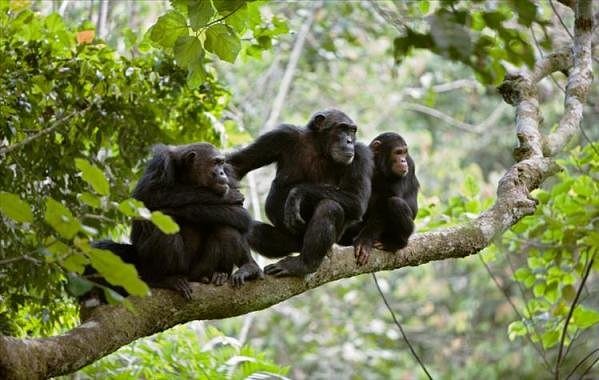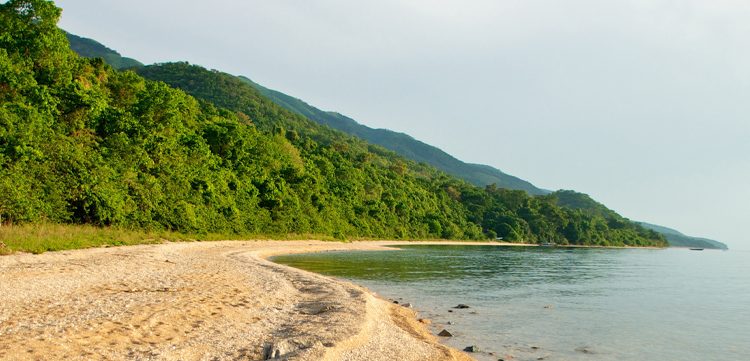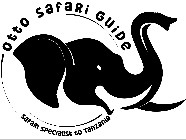Mahale Overview: Cruising and Fishing in Lake Tanganyika, Enchanting Forests
Mahale’s charm is amplified by its seclusion, making it one of Tanzania’s least-visited parks. In tandem with Katavi National Park, its neighboring counterpart, Mahale promises an immersive wilderness experience in an untouched realm.
Fishing, Cruises, and Canoeing on Lake Tanganyika
Lake Tanganyika, the world’s longest freshwater lake, paints a mesmerizing backdrop. Its turquoise waters host over 250 cichlid fish species, creating stunning sunrises and sunsets. Fishing enthusiasts can indulge in quiet lakeside moments, while the adventurous may opt for canoe rentals or sunset sails on traditional dhows, exploring pristine waterways.
For those partial to aquatic adventures, refreshing dips in mountain springs or snorkeling/scuba diving in the lake’s underwater realm beckon. Caution is advised due to the presence of hippos and crocodiles, and local guidance on safe swimming spots is recommended.


Lush and Beautiful Rainforests
Rising sharply from the sandy shores of Lake Tanganyika, the densely wooded slopes of Mahale Mountains are adorned with lush rainforests. This tropical haven, intertwined with alpine bamboo and woodland, was established to safeguard the region’s thousands of chimpanzees. It stands as one of the world’s prime locations for chimp tracking safaris.
Notable for the absence of typical Tanzanian safari inhabitants like lions and elephants, Mahale is home to a rich primate population, including yellow baboons, red colobus, and various monkey species.
Trekking with Chimps
Tanzania hosts a significant percentage of the world’s wild chimpanzee population, with Mahale Mountains being a stronghold. A visit to Mahale offers a rare opportunity to witness these creatures up close in their natural habitat. Chimpanzee families, with dominant males, mature females, and younger members, showcase captivating social dynamics.
The Mimikire clan, extensively studied since the 1960s, is Mahale’s most renowned chimp group, boasting around 56 members. Chimp safaris, ranging from short strolls to more extended excursions, allow visitors to witness these primates’ daily activities. The chimps have grown accustomed to human presence over the years, providing an enchanting experience.
It’s important to note that chimpanzees share 98% of their DNA with humans, making them susceptible to human diseases. As a protective measure, visitors are required to wear surgical masks when in close proximity to chimps.
Mahale Mountains National Park Weather
Situated near the equator, Mahale experiences a hot and humid climate year-round, with temperatures ranging from around 17°C (63°F) at night to 27°C (81°F) during the day. The most significant climate variations occur during the wet and dry seasons.
Best Time to Visit Mahale Mountains
The dry season, spanning from June to October, is optimal for chimp sightings and overall park exploration. The weather is favorable for activities like snorkeling and swimming, with lower malaria risk due to reduced mosquito activity.
Visiting during the wet season (November-April) unveils lush flora, vibrant butterflies, and exceptional birdwatching opportunities. While occasional thunderstorms punctuate the afternoons, the forest comes alive with diverse wildlife.
How to Get to Mahale
Accessing Mahale and Katavi is challenging, lacking official roads. Driving across Tanzania’s heartland is arduous, leaving air and boat travel as more viable options.
Flights: Small planes depart from Arusha or Dar es Salaam twice a week, offering a 4-5 hour flight. Charter flights from various locations are also available. Boats transport guests from the airfield to their lodgings.
Boats: Boats from Kigoma or other northern settlements to Mahale take approximately 4-5 hours. Options include charter boats, lake taxis, ferries, and the Tanapa boat.
For a hassle-free experience, guided tours managed by operators can be a convenient choice.
Where to Stay
Mahale’s exclusivity extends to its limited lodging options.
- Nomad Greystoke Mahale: Nestled on the lake’s banks, Greystoke offers an intimate, Robinson Crusoe-style retreat. Though a substantial investment, guests enjoy tailored experiences.
- Mbali Mbali Mahale: Featuring nine permanent beach tents with lake views, Mbali Mbali offers an all-inclusive alternative at a slightly lower cost.
- Mahale Mango Tree Bandas: Government-run, these self-catering units provide affordable and comfortable options. While not luxurious, they offer well-equipped facilities and knowledgeable park guides.
In conclusion, Mahale Mountains National Park beckons those seeking a truly immersive wilderness encounter, offering a rare glimpse into the world of wild chimpanzees amid breathtaking natural beauty.
Nestled in the extreme west of Tanzania, bordered by the Congo and embraced by the vast Lake Tanganyika, Mahale Mountains National Park stands as a testament to untamed beauty and unparalleled wilderness. This haven is renowned for its nearly 1,000 chimpanzees, concealed beneath the canopy of ancient trees.
Mahale Overview: Cruising and Fishing in Lake Tanganyika, Enchanting Forests
Mahale’s charm is amplified by its seclusion, making it one of Tanzania’s least-visited parks. In tandem with Katavi National Park, its neighboring counterpart, Mahale promises an immersive wilderness experience in an untouched realm.
Fishing, Cruises, and Canoeing on Lake Tanganyika
Lake Tanganyika, the world’s longest freshwater lake, paints a mesmerizing backdrop. Its turquoise waters host over 250 cichlid fish species, creating stunning sunrises and sunsets. Fishing enthusiasts can indulge in quiet lakeside moments, while the adventurous may opt for canoe rentals or sunset sails on traditional dhows, exploring pristine waterways.
For those partial to aquatic adventures, refreshing dips in mountain springs or snorkeling/scuba diving in the lake’s underwater realm beckon. Caution is advised due to the presence of hippos and crocodiles, and local guidance on safe swimming spots is recommended.
Lush and Beautiful Rainforests
Rising sharply from the sandy shores of Lake Tanganyika, the densely wooded slopes of Mahale Mountains are adorned with lush rainforests. This tropical haven, intertwined with alpine bamboo and woodland, was established to safeguard the region’s thousands of chimpanzees. It stands as one of the world’s prime locations for chimp tracking safaris.
Notable for the absence of typical Tanzanian safari inhabitants like lions and elephants, Mahale is home to a rich primate population, including yellow baboons, red colobus, and various monkey species.
Trekking with Chimps
Tanzania hosts a significant percentage of the world’s wild chimpanzee population, with Mahale Mountains being a stronghold. A visit to Mahale offers a rare opportunity to witness these creatures up close in their natural habitat. Chimpanzee families, with dominant males, mature females, and younger members, showcase captivating social dynamics.
The Mimikire clan, extensively studied since the 1960s, is Mahale’s most renowned chimp group, boasting around 56 members. Chimp safaris, ranging from short strolls to more extended excursions, allow visitors to witness these primates’ daily activities. The chimps have grown accustomed to human presence over the years, providing an enchanting experience.
It’s important to note that chimpanzees share 98% of their DNA with humans, making them susceptible to human diseases. As a protective measure, visitors are required to wear surgical masks when in close proximity to chimps.
Mahale Mountains National Park Weather
Situated near the equator, Mahale experiences a hot and humid climate year-round, with temperatures ranging from around 17°C (63°F) at night to 27°C (81°F) during the day. The most significant climate variations occur during the wet and dry seasons.
Best Time to Visit Mahale Mountains
The dry season, spanning from June to October, is optimal for chimp sightings and overall park exploration. The weather is favorable for activities like snorkeling and swimming, with lower malaria risk due to reduced mosquito activity.
Visiting during the wet season (November-April) unveils lush flora, vibrant butterflies, and exceptional birdwatching opportunities. While occasional thunderstorms punctuate the afternoons, the forest comes alive with diverse wildlife.
How to Get to Mahale
Accessing Mahale and Katavi is challenging, lacking official roads. Driving across Tanzania’s heartland is arduous, leaving air and boat travel as more viable options.
Flights: Small planes depart from Arusha or Dar es Salaam twice a week, offering a 4-5 hour flight. Charter flights from various locations are also available. Boats transport guests from the airfield to their lodgings.
Boats: Boats from Kigoma or other northern settlements to Mahale take approximately 4-5 hours. Options include charter boats, lake taxis, ferries, and the Tanapa boat.
For a hassle-free experience, guided tours managed by operators can be a convenient choice.
Where to Stay
Mahale’s exclusivity extends to its limited lodging options.
- Nomad Greystoke Mahale: Nestled on the lake’s banks, Greystoke offers an intimate, Robinson Crusoe-style retreat. Though a substantial investment, guests enjoy tailored experiences.
- Mbali Mbali Mahale: Featuring nine permanent beach tents with lake views, Mbali Mbali offers an all-inclusive alternative at a slightly lower cost.
- Mahale Mango Tree Bandas: Government-run, these self-catering units provide affordable and comfortable options. While not luxurious, they offer well-equipped facilities and knowledgeable park guides.
In conclusion, Mahale Mountains National Park beckons those seeking a truly immersive wilderness encounter, offering a rare glimpse into the world of wild chimpanzees amid breathtaking natural beauty.
